That Useful Wine Site
Search, or just roll your cursor over the colored boxes farther below.click the “x” to dismiss Search-results block.
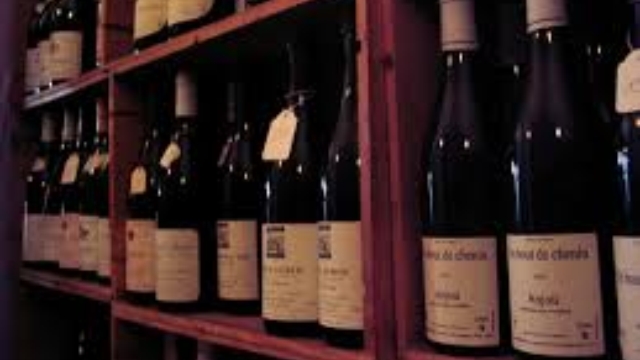
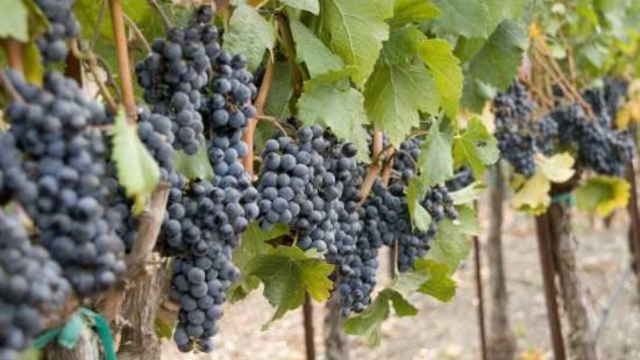
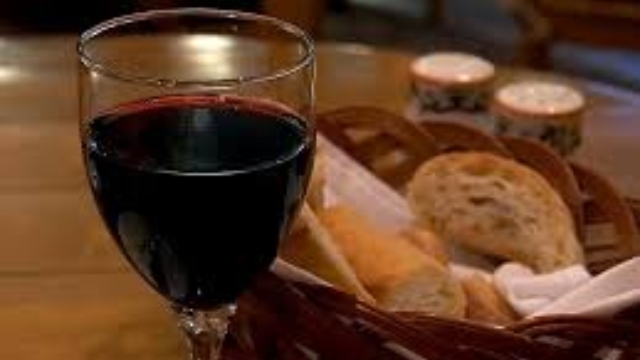
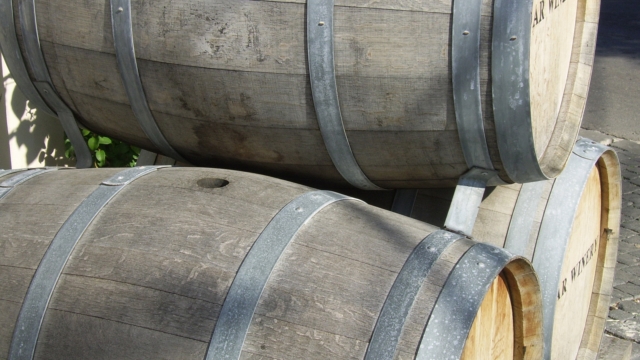
Advertisement:
Advertisement:
Quick page jumps:
(Synonyms: Avillo, Languedocien, Piquepoul Blanc, Piquepoul de Pinet)
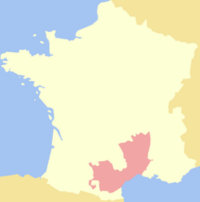
The wines are “Picpoul de Pinet”, but the grape, though often also so called, is properly “Piquepol Blanc”; but here we will, for simplicity, refer to both the grape and the wines as Picpoul de Pinet.
Picpoul is a three-member family of grapes originating in the Languedoc region of France, where its cultivation is many centuries old. The three member varieties are: white (blanc), red (rouge), and rosé (gris); it is the white variety that is most usually used to make wine, and on which we focus here. The great bulk of white Picpoul-based wine is used for “Picpoul de Pinet”, a name that, by French law, designates wines that are 100% white Picpoul and come from one of a small specified set of communes (Pinet, Mèze, Florenzac, Castelnau-de-Guers, Montagnac and Pomérols). (The rest mostly or wholly goes as a small addition into blends, to perk them up a bit with its acidity.)
It is doubtful that even the most ardent advocates of Picpoul de Pinet would call it one of the great wines of the world, but—like so many regional wines that have endured through time—it serves well in certain uses and (as you will see below) does have some ardent fans. Notably, it works well when the chief wanted qualities are crispness and acidity, which are its stock in trade. In its native region, it is commonly drunk with shellfish, especially oysters, but works well with any rich dish, especially anything with a cream-based sauce.
Picpoul is rarely grown outside its native land, but there are a few wineries in the U.S. working with it; Tablas Creek, in California, reports that in its climate, Picpoul retains its defining acidity, but acquires fuller, lusher flavors. Some is also grown in Texas.
The wine is typically a greenish gold in color, with crisp minerality, definite acid, and some citrus qualities, notably lemon. (Some report, and cherish, a hint of salinity or even iodine aromas, which purportedly enhance its use with seafood.) The very name of the grape means “lip stinger”, which suggests its acidity levels. Improved winemaking techniques and greater care have, in recent times, resulted in more distinctive and more widely appreciated versions. Picpoul is a wine best drunk young; aging is neither needed nor wanted.
Picpoul de Pinet wines are virtually all sold in a special, distinctive bottle (called a “Neptune” bottle): green, tall, fairly thin, and with an embossed Languedoc cross on it. Most bottlings come from wine cooperatives, but there are also a few individual vintners making the stuff.
Factoid: In the 17th and 18th centuries, Picpoul was blended with another popular Languedoc white, Clairette, to make a popular blend known as “Picardan”.
Picpoul, “the Muscadet of the South”, gets even less critical love than its analogue. There are lots and lots of Picpouls to be had on the market, but few indeed with decent critical reviews and acceptable availability (almost all, however, are reasonably priced). Here is what seemed to us the most likely candidates.
• This wine’s Wine Searcher “Reviews” page.
• This wine’s CellarTracker review pages.
• Retail offers of this wine listed by Wine Searcher.
• Retail offers of this wine listed by 1000 Corks.
• This wine’s Wine Searcher “Reviews” page.
• This wine’s CellarTracker review pages.
• Retail offers of this wine listed by Wine Searcher.
• Retail offers of this wine listed by 1000 Corks.
• This wine’s Wine Searcher “Reviews” page.
• This wine’s CellarTracker review pages.
• Retail offers of this wine listed by Wine Searcher.
• Retail offers of this wine listed by 1000 Corks.
• This wine’s Wine Searcher “Reviews” page.
• This wine’s CellarTracker review pages.
• Retail offers of this wine listed by Wine Searcher.
• Retail offers of this wine listed by 1000 Corks.
• This wine’s Wine Searcher “Reviews” page.
• This wine’s CellarTracker review pages.
• Retail offers of this wine listed by Wine Searcher.
• Retail offers of this wine listed by 1000 Corks.
We found no Picpouls better enough than those listed above as to justify a “splurge” price.
Advertisement:
Advertisement:
|
|
This site is one of The Owlcroft Company family of web sites. Please click on the link (or the owl) to see a menu of our other diverse user-friendly, helpful sites. |
|
| (Note: All Owlcroft systems run on Ubuntu Linux and we heartily recommend it to everyone—click on the link for more information). | ||
|
All content copyright © 2024 The Owlcroft Company
(excepting quoted material, which is believed to be Fair Use). |
This web page is strictly compliant with the W3C (World Wide Web Consortium) Extensible HyperText Markup Language (XHTML) Protocol v1.0 (Transitional) and the W3C Cascading Style Sheets (CSS) Protocol v3 — because we care about interoperability. Click on the logos below to test us!
This page was last modified on Saturday, 30 October 2021, at 11:26 pm Pacific Time.
Some Descriptions of Picpoul de Pinet Wines
“Immediate words that come to mind whenever I taste a Picpoul de Pinet are crisp, racy and refreshing. Flavors and aromas combine citrus, yellow plums, apricots, blossoms and a well defined minerality. These are not very complex wines, yet always show an honest sense of place. While high in acid, these wines are really not for cellaring and are best enjoyed within two years of release. While the wines are delicious summer sippers, they truly come into their own at the table. They are especially good with seafood such as oysters, crab, razor clams, anchovies or mussels. Some people often refer to Picpoul de Pinet as the ‘Muscadet of the south’, referring to its special affinity with oysters. Apart from seafood, the wines are a great foil for cured meats such as coppa, prosciutto, speck and salami.”
“For a grape variety grown in the warm, sunny Mediterranean, inland from Sète, it has remarkable freshness and citrus-vivacity. Indeed, anyone in doubt of this grape’s freshness should look to its Occitan origins for a translation…lip stinger…so-called for the grape’s high natural acid content, which it retains well in the Mediterranean warmth. This may be partly due to the sea breezes cooling the extreme warmth of the day, and bringing much needed moisture to the vines on their panoramic limestone plateau. It has other quirky attributes too. It is a white-wine-only cru of the Coteaux du Languedoc appellation, though Picpoul de Pinet is always prominently displayed on the label, so it’s easy to find…And it is as an aperitif and to accompany such seafood that it reaches its simple apogee. For this reason, it’s sometimes called it the ‘muscadet of the Languedoc’, though the flavour profile is fuller, if similarly zesty. Picpoul tastes best in the prime of its youth, when it is showing full flavours to their best: white flower blossom, lemon freshness, soft green apple, richly flavoured and relatively full bodied, with just a hint of herbal complexity to the finish of the better examples. It’s a wine that wisely doesn’t see any overt oak influence. Massively complex it will never be, but as a good flavoursome drop with a bite of freshness, it excels.”
“Simply put, Picpoul is my favorite white varietal; specifically, Picpoul de Pinet from Coteaux du Languedoc in France. Since discovering it I almost don’t want to try any other white wine for I have found the one that I love. This is an absolutely delightful varietal. It’s light, dry, minerally, acidic…it’s everything I want from a white wine…It is known for its high acidity which makes it an excellent wine to pair with shellfish—oysters are a popular choice with Picpoul. It is also an excellent choice with rich, soft cheeses.”
“Tasting: Crystal clear with green highlights, though can be more golden from older vines. Soft, delicate nose, with pleasant hints of acacia and hawthorn blossom. Delicate and fresh in the mouth it has an excellent acid/structure balance. It neutralizes the salt and iodine in shellfish and other crustaceans, and is surprisingly good with rich cheese and charcuterie.”
“Think tall, slim, green bottles, containing refreshing, bone-dry white with a mineral and grapefruit tang and hint of white pepper, or whiff of smoke. That’s my take, anyway; others call it ‘steely’, with a ‘floral’ aroma and ‘aniseed’ or ‘green-apple’ notes.”
“[The] wines are extremely good, combining fine acidity, a rich texture and both spice and minerality which make them supremely well-suited to local sea-food dishes.”
“With upbeat freshness and zero oak, it appeals to a wide range of tastes: those who prefer a simple Pinot Grigio, fans of more zesty steely Chablis and even electrifying Sauvignon Blanc.”
“These French white wines are made from a single Picpoul grape variety and is a light acidic wine, with citrus fruit aromas. [Picpoul de Pinet] is the perfect accompaniment to fresh Languedoc seafood.”
“Grown in France by the Mediterranean Sea, this unique variety is lean and bitingly crisp, and with aromas of lemon confit, white flowers and minerals it pairs perfectly with the local oysters and seafood.”
“Comparisons can be odious but I think it is fair to suggest that Picpoul de Pinet is the southern French equivalent of Muscadet. Neither packs a punch of flavour, but they provide brilliant accompaniments to the local seafood, and when finely crafted, have deliciously subtle flavours.”
“Citrusy and bright, Picpoul de Pinet is lively enough to be an aperitif, complex enough to drink with cheese or seafood and—no small consideration—affordable enough to indulge in a second bottle…Picpoul is not a complex grape, but winemakers inevitably bring out sprightly flavor with nuances meant more to be enjoyed than analyzed. Even at its most basic it is crisp and bracing and full of fruit.”